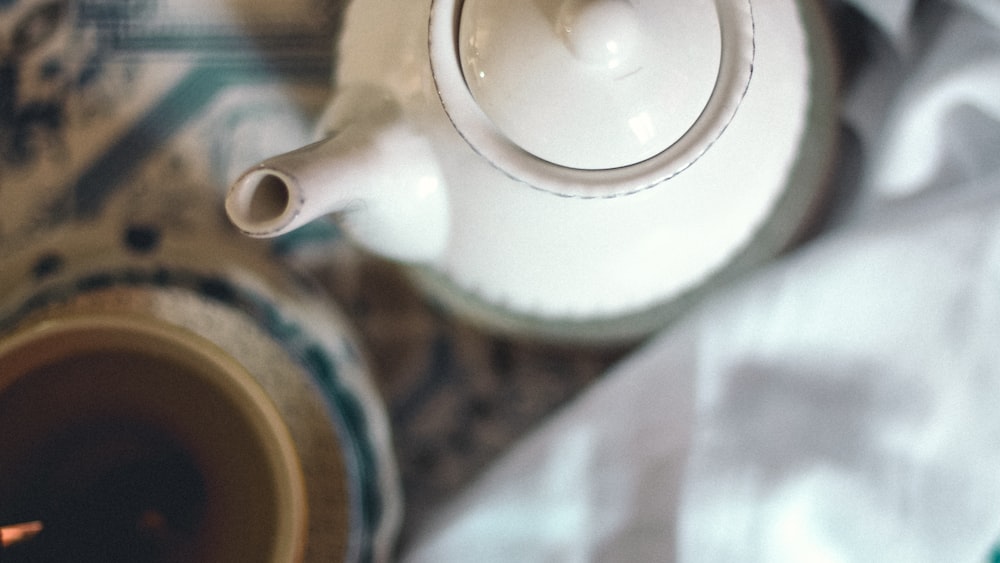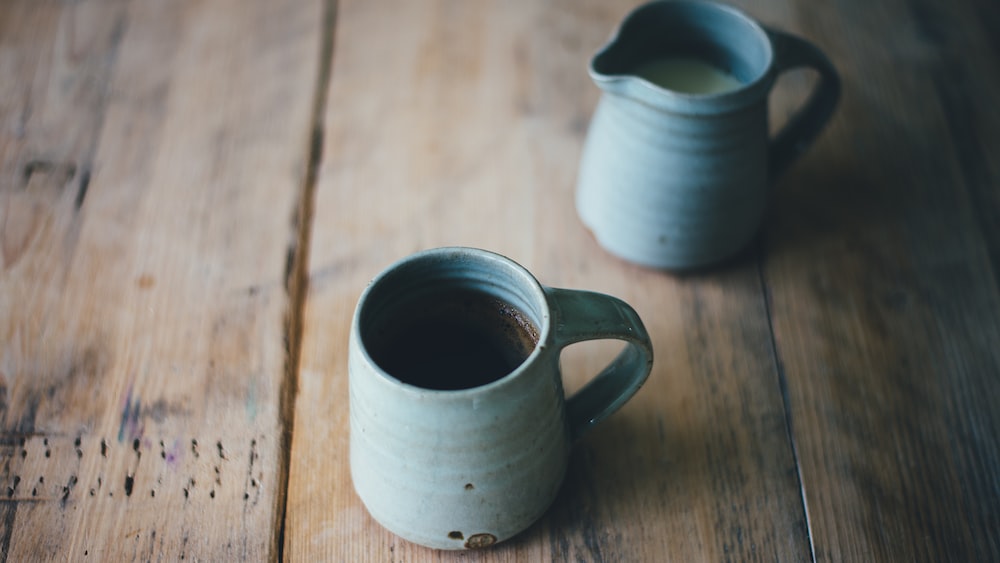Does Earl Grey Tea Have Caffeine? Unveiling The Truth

Does Earl Grey Tea Have Caffeine? Unveiling The Truth
Ah, there’s nothing like a good cup of tea to wake you up in the morning, right? It’s no surprise that tea is a choice drink for millions worldwide. Ancient wisdom wrapped in a warm drink, generously imparting its subtle flavors, caffeine push, and a whole lot of antioxidants to us. But today, we’re here to explore Earl Grey Tea.
“Does it contain caffeine?” you ask. “How does it compare to the cup of joe I so dearly cling onto?” Well, buckle up because we’re about to dive into the world of Earl Grey Tea, unravel its mysteries, and hopefully answer some of your burning questions.
So, sit back, maybe even brew yourself a cup, and embark on this steeped-in-knowledge journey with me. Are you ready?
What is Earl Grey Tea?
Right, so before we delve into the nitty-gritty, let’s familiarize ourselves with what Earl Grey Tea is. The Star Trek fans among you might recognize it as Captain Picard’s drink of choice, but for the rest of us, what really is Earl Grey Tea?
History of Earl Grey Tea
Now, no tea gets its name without a story, right? And Earl Grey is no different. This tea was allegedly named after the former British Prime Minister, Lord Charles Grey, who, funny enough, probably never even tasted the tea! Mysterious much?
But why Earl Grey if the man himself didn’t sip it? Well, the reason could be as colorful as a soap opera – a rescued son, a grateful Chinese mandarin, and a gifted recipe. Or it could be as simple as clever marketing by tea companies – the reality remains clouded. But it doesn’t stop this tea from holding its head high in the world of fine teas!
Earl Grey tea is named after a former British Prime Minister, Lord Charles Grey, who may have never actually tasted it, but its origin story remains mysterious and clouded.
Components of Earl Grey Tea
If we wander into the meadows of the Camellia sinensis plant, the birthplace of all true tea, we’ll come across some different versions of Earl Grey. The heart of this tea is generally a robust black tea base, like a good solid Assam or delicate Darjeeling, with a citrusy twist.
But what gives Earl Grey its distinct personality is the oil of bergamot. Laden with its characteristic aromatic citrus notes, every Earl Grey vessel quivers with this secret ingredient. And before you start scratching your heads, “bergamot” is a type of citrus fruit, not a character from your favorite fantasy novel!
Does Earl Grey Tea Contain Caffeine?
Now for the big question – the one that keeps us all on the edge of our teacups: “Does Earl Grey contain caffeine?”
Understanding the Caffeine Content in Earl Grey Tea
Yes, it does contain caffeine! But don’t worry, it doesn’t pack the same punch as coffee! One cup of Earl Grey, brewed perfectly, typically contains around 30 to 60 milligrams of caffeine. Now, I know what you’re thinking – “What does that really mean?” Well, it means it’s less than half of what a regular cup of coffee contains. So whether you’re looking for a quiet wake-me-up or a nighttime companion, Earl Grey’s got you covered.
But here’s a bit of tea science. The caffeine content in your Earl Grey isn’t fixed. It’s a tricky little compound, influenced by a variety of factors ranging from the way you brew your tea to the very nature of the tea leaves themselves.
Factors Affecting the Caffeine Content in Earl Grey Tea
The brewing time significantly influences how much caffeine you get in your cup. A quick dip will yield less caffeine, while a longer steep time means a stronger tea and a higher caffeine content.

Interestingly, the location where our lovely Camellia sinensis plant grows also plays a role – climates and varying growing conditions can result in different caffeine concentrations. Does all this make your cup of Earl Grey a tad more fascinating; don’t you think?
Comparing Earl Grey Tea to Other Beverages
Well, now that we know Earl Grey tea doesn’t shy away from a bit of caffeine, how does it stack up against other popular beverages? Let’s dive into some comparisons, shall we?
Earl Grey Tea vs Coffee: Caffeine Content
Now, imagine a world where your mug becomes your battleground. Yes, you heard it right, it’s the classic showdown: Earl Grey vs Coffee.
We’re all familiar with our morning energizer, the coffee. But do you know that an average cup of coffee can contain anywhere from 95 to 200 mg of caffeine? Quite a punch, isn’t it?
Now, let’s look at our contender – the elegant Earl Grey. Originating from the finest black tea leaves, Earl Grey contains about one-third of the caffeine in coffee, or around 30 – 50 mg per cup. The anecdote here is clear: if you want to avoid trembling like a Chihuahua post breakfast, maybe Earl Grey is your avenue.
Earl Grey Tea vs Other Teas: Caffeine Content
But what if we bring other teas into this teatastic showdown? Well, let’s serve up the facts straight, shall we?
Ranked by caffeine content, black tea like Earl Grey sits comfortably in the middle of the tea spectrum. It contains less caffeine than matcha or yerba mate, which contain around 70-80 mg per cup. But it surely outperforms softer contenders like white tea and green tea, typically clocking in at 10-30 mg per cup.
In essence, Earl Grey obtains the Goldilocks’ approval – right in the middle, not too much, not too little. Perfectly suited for our caffeine-conscious tea aficionados.
Earl Grey tea sits comfortably in the middle of the tea spectrum in terms of caffeine content, making it a perfect choice for those who want a moderate caffeine boost.
Health Benefits and Side Effects of Caffeine in Earl Grey Tea
Now, let’s talk turkey – we’ve been dilly-dallying about caffeine contents; but what does it all boil down to? How does it impact our health and are there any hitches we should be aware of?
Potential Health Benefits of Caffeine in Earl Grey Tea
Now, the good thing about our Earl Grey tea is that its caffeine content is accompanied by an array of health benefits, making it like superman in a cup.

- Keep your mental engines running: Research suggests that moderate amounts of caffeine can improve mental alertness and memory. An Earl Grey in the morning might just be the ticket to acing that test or nailing the presentation!
- Heart Healthy: A fascinating study published in the American Journal of Clinical Nutrition found that black tea (which, remember, is the base of Earl Grey) may help to reduce LDL “bad” cholesterol levels.
- Weight Management: Tea lovers unite! Regular consumption of black tea might help manage body weight and body fat, as suggested by a study in the journal “Nutrition Research.”
Potential Side Effects of Caffeine in Earl Grey Tea
Remember though – while Earl Grey may be a cup full of benefits, too much can tip the scale.
Drinkers sensitive to caffeine may experience jitters, anxiety, or faster heart rate. Consider limiting your Earl Grey intake if you find yourself twitching like a cartoon character, or going off like a ping-pong ball at slightest provocation!
Also, be mindful of your sleeping patterns. Downing your Earl Grey late into the evening could turn your sweet dreams into a sheep-counting marathon.
How to Brew Earl Grey Tea
We’ve ventured through the aspects of caffeine content and its side effects, why don’t we get our hands dirty (or should I say wet?), and dive into the brewing process.
Necessary Tools and Ingredients
Now, brewing the perfect cup of Earl Grey is a bit of an art. But worry not, we have your supplies sorted.
You’ll need the following tools:
- Teapot or mug
- Tea strainer or an infuser
- Hot water kettle
And the ingredients:
- Earl Grey tea: Loose leaf or tea bags, as per your preference.
- Water: The better the quality, the better your brew.
- Optional: Lemon, sugar, honey or bergamot oil to top it up as per your taste buds.
Now, you’re ready to start brewing! Are your whisks quivering with anticipation yet?
Step-by-Step Brewing Process
Ah, the art of brewing a cup of Earl Grey tea. It can be as simple as a ballet dance or as complex as a rocket science experiment. And remember, it’s all in the details, folks!
- Start by boiling water to approximately 85-90°C. I know, I know, it sounds rather scientific for a morning routine, but trust me, it makes all the difference. So, drag out your thermometers, folks!
- Next, add one teaspoon of Earl Grey tea leaves to your infuser. FYI, “a teaspoon” is relative. So, if you’re an Earl Grey connoisseur with a penchant for bold flavors, feel free to pile it on.
- Pour the hot water over the leaves, and let it steep for about 3-5 minutes. This is the perfect amount of time to butter your breakfast toast or play a game of Sudoku. Math nerds, you’re welcome.
FAQs
1. How much caffeine is in a cup of Earl Grey Tea?
The caffeine in a cup of Earl Grey tea, my dear friends, significantly varies. Generally, a standard 8-ounce cup may contain about 30-60 mg of caffeine. That’s half compared to coffee, you caffeine addicts!

2. Does the brewing process affect the caffeine content in Earl Grey Tea?
Ah, the brewing process and its effect on caffeine content, a subject of great debate in the tea world. Yes, indeed. The brewing process can indeed alter the caffeine content. Longer brewing times can lead to higher caffeine levels. So, if you’re after less caffeine, brew it like you’re making instant noodles – quick and easy.
3. Can I get decaffeinated Earl Grey Tea?
Decaffeinated Earl Grey tea on the shelves? Absolutely! Many brands offer decaf versions for those trying to limit their caffeine intake. Now you can enjoy your favorite tea without getting jittery.
4. What are the alternatives to Earl Grey Tea if I want to avoid caffeine?
If you want to avoid caffeine in your Earl Grey, camomile, or rooibos, teas are excellent alternatives. Both are naturally caffeine-free and provide an array of flavors to savor. But remember, no amount of camomile can replicate the distinct bouquet of Earl Grey, just saying!
Conclusion
And there we have it, folks! We’ve plunged into the depths of Earl Grey tea, dissecting its caffeine content, comparing it to other caffeinated villains, and even unmasking the mystery of its brewing process. We’ve discovered that yes, Earl Grey does contain caffeine, but the levels are half that of a cup of coffee. So, for my caffeine-sensitive readers, you can heave a sigh of relief.
From the serious health concerns to the lighter, antispasmodic benefits, we’ve covered it all. We’ve even dived into FAQs and came out alive on the other end.
So, the next time you indulge in your next cup of Earl Grey, you’ll know exactly what to expect. You’ve mastered the art of tea-brewing and, at the same time, leveled up in your tea facts.
Until the next brewing adventure, my tea-loving compadres, stay curious, stay thirsty! Fare thee well,
Zoe.






